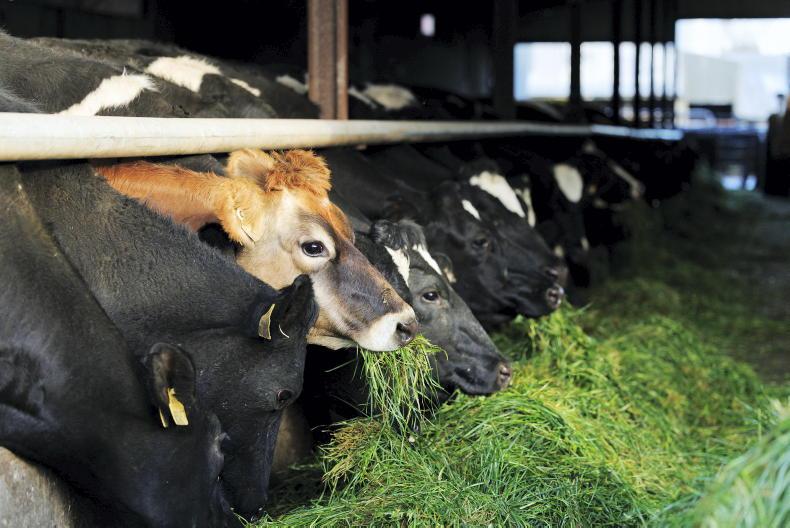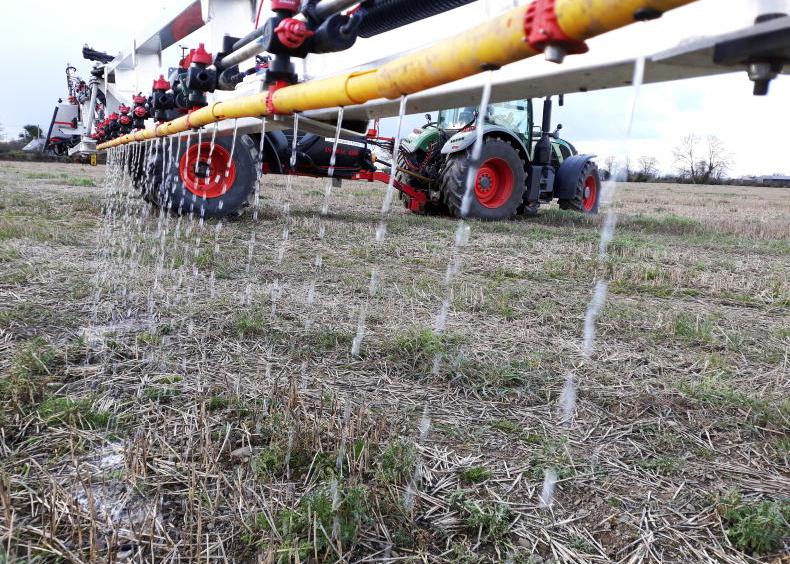Last week’s issue of the Irish Farmers Journal carried two short pieces on climate science issues and their political implications, arising from a lecture given in Dublin on 4 May by MIT emeritus professor Richard Lindzen.
In his weekly column Dempsey at Large, Matt Dempsey reported on what he heard there under the title “A real climate change debate starts”. On the editorial page, Justin McCarthy introduced the topic under the heading “Policy decisions should be based on latest scientific analysis”.
In response to these pieces, An Taisce issued a press release on 12 May headed “Climate fiction at the Irish Farmers Journal” that harshly criticised Mr Dempsey and Mr McCarthy for what they had written.
I would like to comment here on the issue of whether the scientific points reported in the two Irish Farmers Journal pieces can or cannot justifiably be described as science fiction, as alleged by An Taisce, or whether they represent the start of a real climate debate. I will not discuss here any political implications of these scientific issues.
I will focus on the two key scientific points from Prof Lindzen’s lecture reported by Matt Dempsey. I take first the point that while CO2 levels are certainly increasing and some warming of the earth is resulting, the observed warming is small compared with climate model projections.
This involves the intertwined issues of climate sensitivity – the degree of global warming to be expected in the real climate system from a CO2 doubling relative to its pre-industrial level and the issue of the realism of global climate model (GCM) projections of CO2-induced warming.
In this area, I can claim a degree of expertise, having published in the peer-reviewed scientific literature on the topic and being familiar with the current literature.
The first thing to be said in this regard is that the value of climate sensitivity is an unsettled issue in climate science. The Intergovernmental Panel on Climate Change (IPCC) in its most recent report estimated that climate sensitivity lies somewhere in the range 1.5°C - 4.5°C, with an acknowledgement that it was not possible to assign a precise value in the current state of scientific knowledge.
Prof Lindzen has been a leading researcher in this area and spoke about it in his Dublin lecture. In 2011, he and his colleague, Yong-Sang Choi, published an important paper in which they used satellite observations and an energy balance model of the climate system to arrive at an estimate of climate sensitivity that lay below 1°C. The IPCC referred to the Lindzen-Choi results in its 2013 report, but regarded them as less significant than the GCM results, on which their own estimated range was based.
Since the 2013 IPCC report, however, there have been research developments that add weight to the Lindzen-Choi results and that call into question the IPCC’s sensitivity results.
In 2015, Thorsten Mauritsen and Bjorn Stevens of the Max Planck Institute for Meteorology in Hamburg published a paper that re-examined satellite observations of the earth’s net radiation and found results that supported the Lindzen-Choi results.
In 2016, I published a paper in the American journal, Earth and Space Science, in which I used the satellite observational results from both the Lindzen-Choi and Mauritsen-Stevens papers, along with a more complex energy balance model, and found results that lay close to the low climate sensitivity results of Lindzen-Choi.
My paper was thoroughly peer-reviewed (the journal editor chose five reviewers). Independently, Willie Soon, Ronan Connolly and Michael Connolly (the latter two being Irish climate scientists) published a paper in the journal Earth-Science Reviews in 2015 in which they estimated climate sensitivity to be even lower than the Lindzen-Choi estimate.
Scrutiny
Meanwhile, very serious questions are beginning to arise in the scientific literature about the tuning procedures for the sub-grid scale physical processes used in the GCMs. Last October, a very revealing article by P Voosen appeared in Science magazine under the title “Climate scientists open up their black boxes to scrutiny”.
This has been followed by an article with lead author F Hourdin in the March 2017 issue of the Bulletin of the American Meteorological Society entitled “The art and science of climate model tuning”.
Until recently, it had been generally assumed that the climate sensitivity given by the GCMs was determined by the physics of the models. It now begins to appear that the GCMs are tuned by the modellers to give a climate sensitivity that lies in “an anticipated acceptable range”.
The second major point reported by Matt Dempsey in his column last week concerned the contribution to global warming of the agriculturally produced gases methane and nitrous oxide. Prof Lindzen stated that the contribution of these gases is small, as their absorption of heat radiation in the atmosphere is totally outweighed by naturally occurring water vapour, which is thousands of times more abundant. I have no special expertise in this area, having never published anything on the matter. However, forthcoming lectures in Dublin by experts in this matter will broaden the debate.
I hope I’ve provided enough scientific evidence in this article to show that Mr Dempsey’s and Mr McCarthy’s pieces in last week’s Irish Farmers Journal are not climate fiction, as claimed by An Taisce, but represent the beginning of a real debate.
Ray Bates is Adjunct Professor of Meteorology at UCD. He was formerly Professor of Meteorology at the Niels Bohr Institute of the University of Copenhagen and a senior scientist at NASA’s Goddard Space Flight Centre. He served as an expert reviewer of the recent and previous IPCC reports. He is a member of the Royal Irish Academy. Read more
Colm McCarthy: climate change and national emission targets
Last week’s issue of the Irish Farmers Journal carried two short pieces on climate science issues and their political implications, arising from a lecture given in Dublin on 4 May by MIT emeritus professor Richard Lindzen.
In his weekly column Dempsey at Large, Matt Dempsey reported on what he heard there under the title “A real climate change debate starts”. On the editorial page, Justin McCarthy introduced the topic under the heading “Policy decisions should be based on latest scientific analysis”.
In response to these pieces, An Taisce issued a press release on 12 May headed “Climate fiction at the Irish Farmers Journal” that harshly criticised Mr Dempsey and Mr McCarthy for what they had written.
I would like to comment here on the issue of whether the scientific points reported in the two Irish Farmers Journal pieces can or cannot justifiably be described as science fiction, as alleged by An Taisce, or whether they represent the start of a real climate debate. I will not discuss here any political implications of these scientific issues.
I will focus on the two key scientific points from Prof Lindzen’s lecture reported by Matt Dempsey. I take first the point that while CO2 levels are certainly increasing and some warming of the earth is resulting, the observed warming is small compared with climate model projections.
This involves the intertwined issues of climate sensitivity – the degree of global warming to be expected in the real climate system from a CO2 doubling relative to its pre-industrial level and the issue of the realism of global climate model (GCM) projections of CO2-induced warming.
In this area, I can claim a degree of expertise, having published in the peer-reviewed scientific literature on the topic and being familiar with the current literature.
The first thing to be said in this regard is that the value of climate sensitivity is an unsettled issue in climate science. The Intergovernmental Panel on Climate Change (IPCC) in its most recent report estimated that climate sensitivity lies somewhere in the range 1.5°C - 4.5°C, with an acknowledgement that it was not possible to assign a precise value in the current state of scientific knowledge.
Prof Lindzen has been a leading researcher in this area and spoke about it in his Dublin lecture. In 2011, he and his colleague, Yong-Sang Choi, published an important paper in which they used satellite observations and an energy balance model of the climate system to arrive at an estimate of climate sensitivity that lay below 1°C. The IPCC referred to the Lindzen-Choi results in its 2013 report, but regarded them as less significant than the GCM results, on which their own estimated range was based.
Since the 2013 IPCC report, however, there have been research developments that add weight to the Lindzen-Choi results and that call into question the IPCC’s sensitivity results.
In 2015, Thorsten Mauritsen and Bjorn Stevens of the Max Planck Institute for Meteorology in Hamburg published a paper that re-examined satellite observations of the earth’s net radiation and found results that supported the Lindzen-Choi results.
In 2016, I published a paper in the American journal, Earth and Space Science, in which I used the satellite observational results from both the Lindzen-Choi and Mauritsen-Stevens papers, along with a more complex energy balance model, and found results that lay close to the low climate sensitivity results of Lindzen-Choi.
My paper was thoroughly peer-reviewed (the journal editor chose five reviewers). Independently, Willie Soon, Ronan Connolly and Michael Connolly (the latter two being Irish climate scientists) published a paper in the journal Earth-Science Reviews in 2015 in which they estimated climate sensitivity to be even lower than the Lindzen-Choi estimate.
Scrutiny
Meanwhile, very serious questions are beginning to arise in the scientific literature about the tuning procedures for the sub-grid scale physical processes used in the GCMs. Last October, a very revealing article by P Voosen appeared in Science magazine under the title “Climate scientists open up their black boxes to scrutiny”.
This has been followed by an article with lead author F Hourdin in the March 2017 issue of the Bulletin of the American Meteorological Society entitled “The art and science of climate model tuning”.
Until recently, it had been generally assumed that the climate sensitivity given by the GCMs was determined by the physics of the models. It now begins to appear that the GCMs are tuned by the modellers to give a climate sensitivity that lies in “an anticipated acceptable range”.
The second major point reported by Matt Dempsey in his column last week concerned the contribution to global warming of the agriculturally produced gases methane and nitrous oxide. Prof Lindzen stated that the contribution of these gases is small, as their absorption of heat radiation in the atmosphere is totally outweighed by naturally occurring water vapour, which is thousands of times more abundant. I have no special expertise in this area, having never published anything on the matter. However, forthcoming lectures in Dublin by experts in this matter will broaden the debate.
I hope I’ve provided enough scientific evidence in this article to show that Mr Dempsey’s and Mr McCarthy’s pieces in last week’s Irish Farmers Journal are not climate fiction, as claimed by An Taisce, but represent the beginning of a real debate.
Ray Bates is Adjunct Professor of Meteorology at UCD. He was formerly Professor of Meteorology at the Niels Bohr Institute of the University of Copenhagen and a senior scientist at NASA’s Goddard Space Flight Centre. He served as an expert reviewer of the recent and previous IPCC reports. He is a member of the Royal Irish Academy. Read more
Colm McCarthy: climate change and national emission targets










SHARING OPTIONS